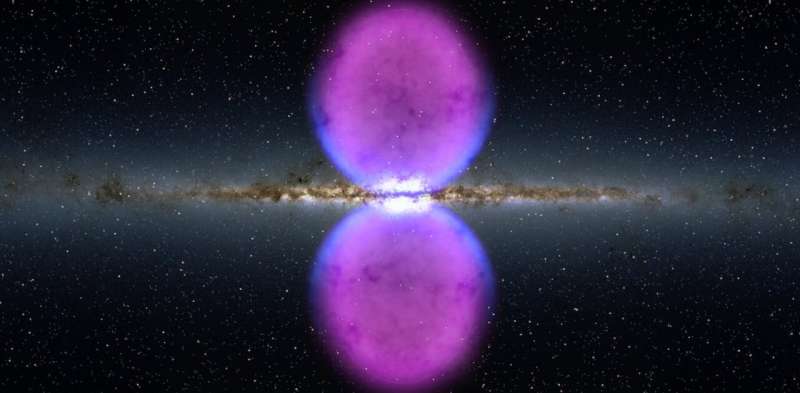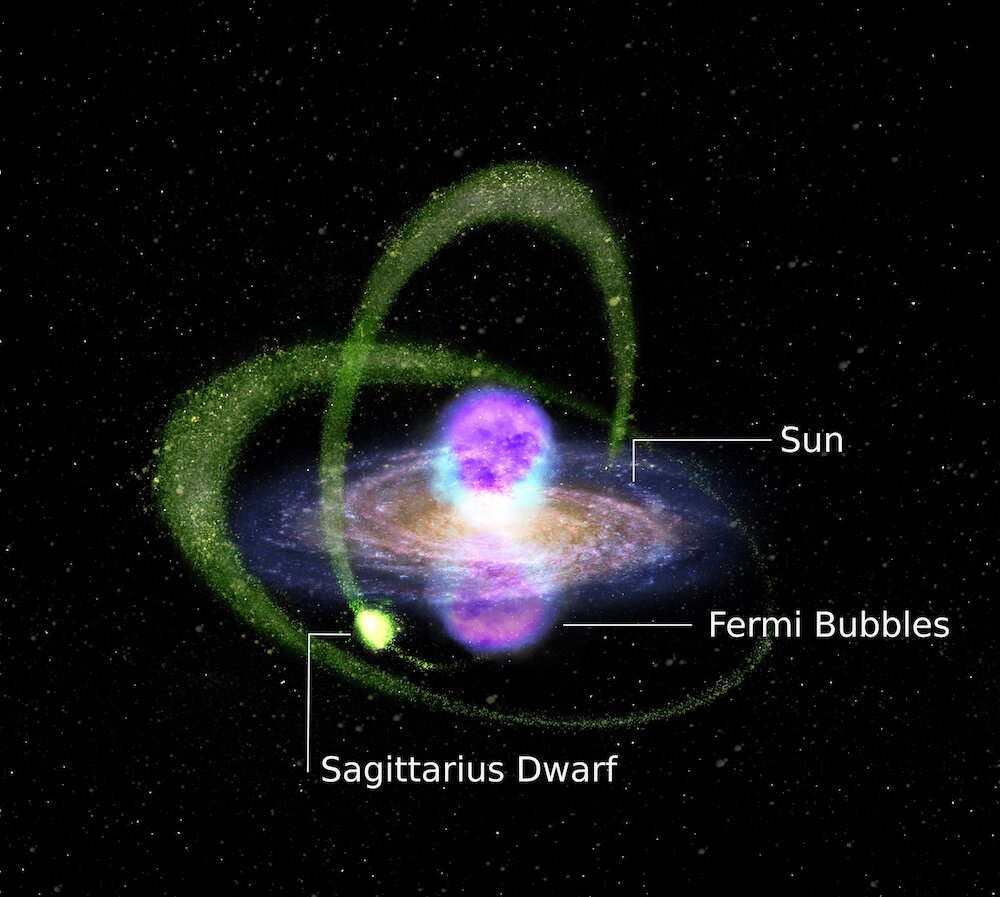A pair of bubbles active in the gamma range rises above the center of the Milky Way. Scientists have concluded that at least one of them created radiation from the Sagittarius dwarf galaxy.

Bubbles over the center of the Milky Way
The Earth’s atmosphere effectively protects us from gamma rays, allowing life to exist on the surface of the planet. But it also closes most of the phenomena that adorn the Universe in this region of the spectrum from us. Therefore, by 2010, when the Fermi observatory was put into orbit, no one knew that two huge bubbles were rising above and below the plane of the Milky Way.
They cover 10 percent of the sky, but emit only in the gamma range. Since they are located above the center of the Milky Way, their appearance is usually explained by the activity of the black hole Sagittarius A*. Many other black holes emit at these wavelengths due to the absorption of a large amount of matter.
Researchers began to look for confirmation of this theory and allegedly found two jets departing from the bubbles to the center of the Milky Way. But more detailed studies have shown that if such a structure really exists in the northern bubble, then in the southern one it turned out to be an illusion. Instead, there is a cocoon-like structure inside it.
Sagittarius Dwarf Galaxy
In a new study, scientists have concluded that the appearance of the southern bubble may be responsible for the dwarf galaxy Sagittarius orbiting the Milky Way. When viewed from the Earth, it is located in the same area of the sky as an active formation in the gamma range.
It is obvious that the bubble “heats up” radiation coming from somewhere outside. But its source was still unclear. At first, scientists suspected that its source was the dark matter surrounding the Milky Way and its moons. But observations have shown that the cocoon inside the bubble exactly corresponds to the place in the sky where the Sagittarius galaxy is located.
That is, the sources are somewhere between its vision. And scientists have only one candidate for their role. These are millisecond pulsars, neutron stars rotating very fast. They are natural particle accelerators.

It should also be noted that the Sagittarius dwarf galaxy is a remnant of a much larger star system. It was once torn apart by the gravity of the Milky Way. This event is evidenced by the stars that were once part of it, and now are in the streams surrounding our Galaxy.
According to phys.org
Follow us on Twitter to get the most interesting space news in time
https://twitter.com/ust_magazine
